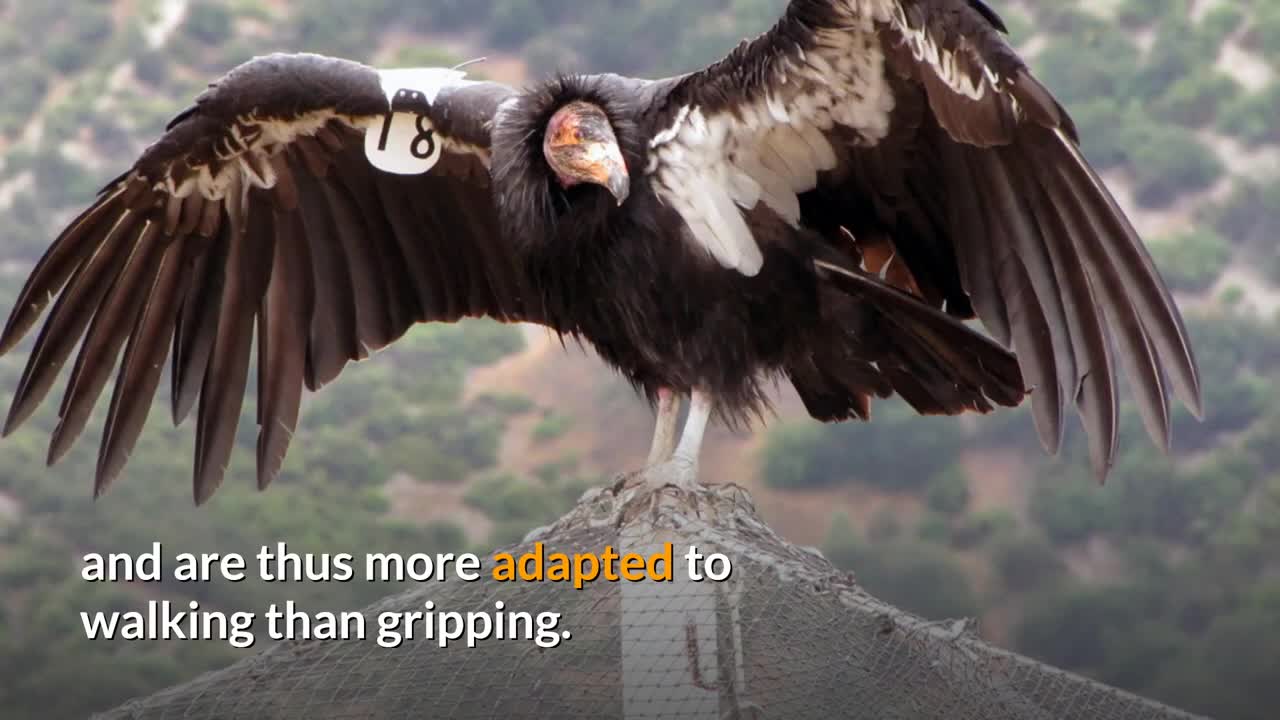Premium Only Content

California Condor || Description, Characteristics and Facts!
The California condor (Gymnogyps californianus) is a New World vulture and the largest North American land bird. It became extinct in the wild in 1987 (all remaining wild individuals were captured), but has since been reintroduced to northern Arizona and southern Utah (including the Grand Canyon area and Zion National Park), the coastal mountains of central and southern California, and northern Baja California. Although four other fossil members are known, it is the only surviving member of the genus Gymnogyps. The species is listed by the IUCN as critically endangered.
The plumage is black with patches of white on the underside of the wings; the head is largely bald, with skin color ranging from gray on young birds to yellow and bright orange on breeding adults. Its 3.0 m (9.8 ft) wingspan is the widest of any North American bird, and its weight of up to 12 kg (26 lb) nearly equals that of the trumpeter swan, the heaviest among native North American bird species. The condor is a scavenger and eats large amounts of carrion. It is one of the world's longest-living birds, with a lifespan of up to 60 years.
Condor numbers dramatically declined in the 20th century due to poaching, lead poisoning, and habitat destruction. A conservation plan was put in place by the United States government that led to the capture of all the remaining wild condors which was completed in 1987, with a total population of 27 individuals. These surviving birds were bred at the San Diego Wild Animal Park and the Los Angeles Zoo. Numbers rose through captive breeding and, beginning in 1991, condors were reintroduced into the wild. Since then, its population has grown, but the California condor remains one of the world's rarest bird species: as of 2019 there are 518 California condors living wild or in captivity.
The condor is a significant bird to many Californian Native American groups and plays an important role in several of their traditional myths.
-

Redacted News
1 hour agoBREAKING! FBI DIRECTOR DROPS BOMBSHELL, REVEALS HIDDEN 'BURN BAGS' AND MISSING EPSTEIN FOOTAGE
35.2K35 -
 DVR
DVR
vivafrei
2 hours agoJoey Swoll CANCELS Himself! Oprah Closing Roads for Tsunami Evacuees? Canada Can't Find Criminals?
49.4K16 -
 LIVE
LIVE
Right Side Broadcasting Network
5 hours agoLIVE: President Trump Delivers Remarks on Making Health Technology Great Again - 7/30/25
3,804 watching -
 38:23
38:23
Members Club
1 hour agoShooter Strikes NYC, WNBA Wig Meltdown, and Sweeney’s Jeans Go Viral - MC05
1 -
 33:41
33:41
The Finance Hub
3 hours ago $0.02 earnedBREAKING: NANCY PELOSI JUST GOT HIT WITH A MAJOR BOMBSHELL!!!
381 -
 LIVE
LIVE
LFA TV
20 hours agoLFA TV ALL DAY STREAM - WEDNESDAY 7/30/25
1,379 watching -
 LIVE
LIVE
Dr Disrespect
5 hours ago🔴LIVE - DR DISRESPECT - BATTLEFIELD 1 - FULL GAME
1,482 watching -
 LIVE
LIVE
Barry Cunningham
1 hour agoPRESIDENT TRUMP SPEECH AT MAKING HEALTH TECHNOLOGY GREAT AGAIN! EVENT AND MORE NEWS!
1,427 watching -

Pop Culture Crisis
2 hours agoOprah Tsunami BACKLASH, Billie Eilish RACIST? Joey Swoll BENDS THE KNEE | Ep. 888
10K4 -
 LIVE
LIVE
The HotSeat
1 hour agoLibs Are BIG Mad Over New Commercials and The Fed Is Just Another Political Weapon
530 watching